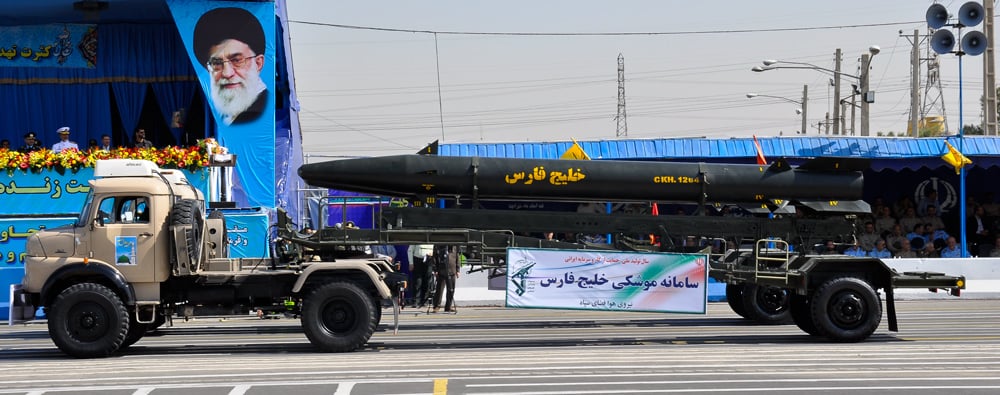
While complying with the terms of the nuclear weapons agreement, Iran will continue to test and improve the range and accuracy of its ballistic missiles to deter or coerce potential adversaries — the United States operating in the region, Gulf Arab states, Turkey and Israel – four Middle East experts said last week.
“The missile program was not directly affected by that agreement” covering the nuclear weapons program, Zalmay Khalilzad, a former ambassador and now a counselor to the Center for Strategic and International Studies, said Friday.
That has been the opening Iran uses to continue working on its missiles.
Bilal Saab, co-author of a new issue briefing paper on Iran’s missile program for the Atlantic Council, said, Tehran understands it faces a powerful set of adversaries [the United States, United Kingdom, France, Israel and the Arab Gulf states] if Tehran forces a confrontation.
But by playing its cards carefully on its missile program it can test the Gulf Cooperation Council’s ability to react, the relationship between the council and the United States and Washington’s resolve to act in a challenge — say an attack on a GCC radar site — to partners but not treaty allies, he said.
A number of the panelists pointed out that the missile program itself continues to destabilize a region wracked by civil war in Syria, heighten sectarian tensions between the Sunni states — led by Saudi Arabia and Shiite Iran and could set off a new arms race that would include cyber in the Middle East.
Speaking at the Atlantic Council in Washington, Michael Elleman, consulting senior fellow for missile defense at the International Institute for Strategic Studies, said Iran started its missile program in response to Saddam Hussein’s attacks on its cities in the long-running 1980s war as a deterrent. Tehran learned from allied tactics in Desert Shield how to employ missiles as precision fires to conduct war.
Tehran, however, still has a long way to go in improving accuracy even in its shorter and medium-range missiles carrying conventional weapons. For example, Iran’s version of the Scud “lands within one kilometer of its target.” To be effective against a hardened target, he said it needed to be accurate within 20 feet.
Elleman added that Iran has not stepped up the pace of its testing program on a number of missiles and needs much more work on it target acquisition, communications systems and bomb damage assessment — using unmanned aerial vehicles.
He estimated Iran was five years or more away from producing missiles equivalent to the long-range Army Tactical Missile System and Pershing II. Achieving range and accuracy “is not something that’s going to happen overnight.” But the United States should “keep a watchful eye and make sure Russia and China are not helping them.”
Elleman also mentioned Pakistan as a possible supplier of missile technology and North Korea, a supplier in the past.
As for Iran’s space program being a cover for Tehran developing an intercontinental ballistic missile, Elleman was skeptical since it has “moved part of the space enterprise outside the control of the military. He said it was more likely Iran “will continue to pursue a hedging strategy” where it can learn some lessons applicable to an ICBM through its space program.
“Over time, Iran will prove a threat to the homeland [and allies in Europe].” He estimated a decade to develop an ICBM, Khalilzad said.
Kelsey Davenport, director for nonproliferation policy at the Arms Control Association, said the United Nations acceptance of the Iranian nuclear deal muddied the waters of what was acceptable or not acceptable in Tehran’s missile program by specifying a halt to it as it related to nuclear weapons.
“You can see the ambiguity that creates” by not specifically including conventional weapons.
Davenport sees export controls, being wary of sales of dual-use technologies and a strengthening of the interdiction program to stop the flow of materials to Iran, rather than new sanctions, as being effective ways to slow the missile program down.
As for the Gulf states, Saab said Saudi Arabia and the United Arab Emirates could “double down” on their strengths in airpower and stand-off weapons to keep Iran at bay. For all, they should “really get serious about missile defense integration,” even if it means giving up some bits of national sovereignty, to alert each other and fire from one nation to protect another.





